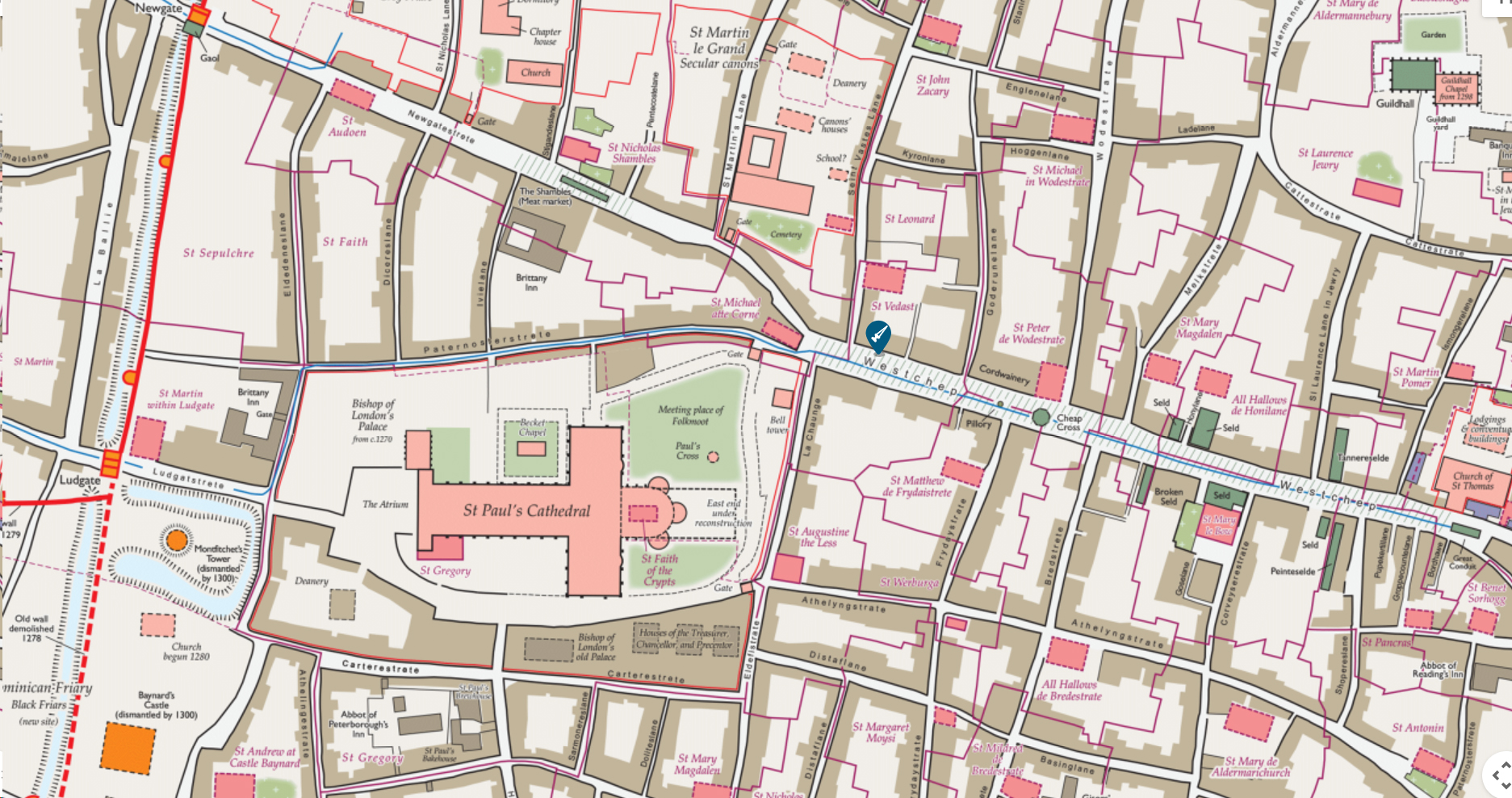Researchers have uncovered handwritten letters, court documents, and a coroner’s report related to the nearly 700-year-old cold case murder of a medieval priest. Published on June 5 in the journal Criminal Law Forum, the investigation draws on direct archival evidence from Cambridge University that is helping fill in the gaps to a high-profile true crime scandal that would make headlines even today. But despite a mountain of firsthand accounts, the murder’s masterminds never saw justice.
The ‘planned and cold-blooded’ crime
On Friday, May 3, 1337, Anglican priest John Forde began a walk along downtown London’s Cheapside street after vespers (evening prayers) shortly before sunset. At one point, a clergyman familiar to Forde by the name of Hasculph Neville approached him to begin a “pleasant conversation.” As the pair neared St. Paul’s Cathedral, four men ambushed the priest. One of the attackers then proceeded to slit Forde’s throat using a 12-inch dagger as two other assailants stabbed him in the stomach in front of onlookers.
The vicious crime wasn’t a brazen robbery or politically motivated attack. It was likely a premeditated murder orchestrated by Ela Fitzpayne, a noblewoman, London crime syndicate leader—and potentially Forde’s lover.
“We are looking at a murder commissioned by a leading figure of the English aristocracy. It is planned and cold-blooded, with a family member and close associates carrying it out, all of which suggests a revenge motive,” Cambridge University criminology professor Manuel Eisner explained in a statement.

A longstanding feud
To understand how such a brutal…
Read the full article here
